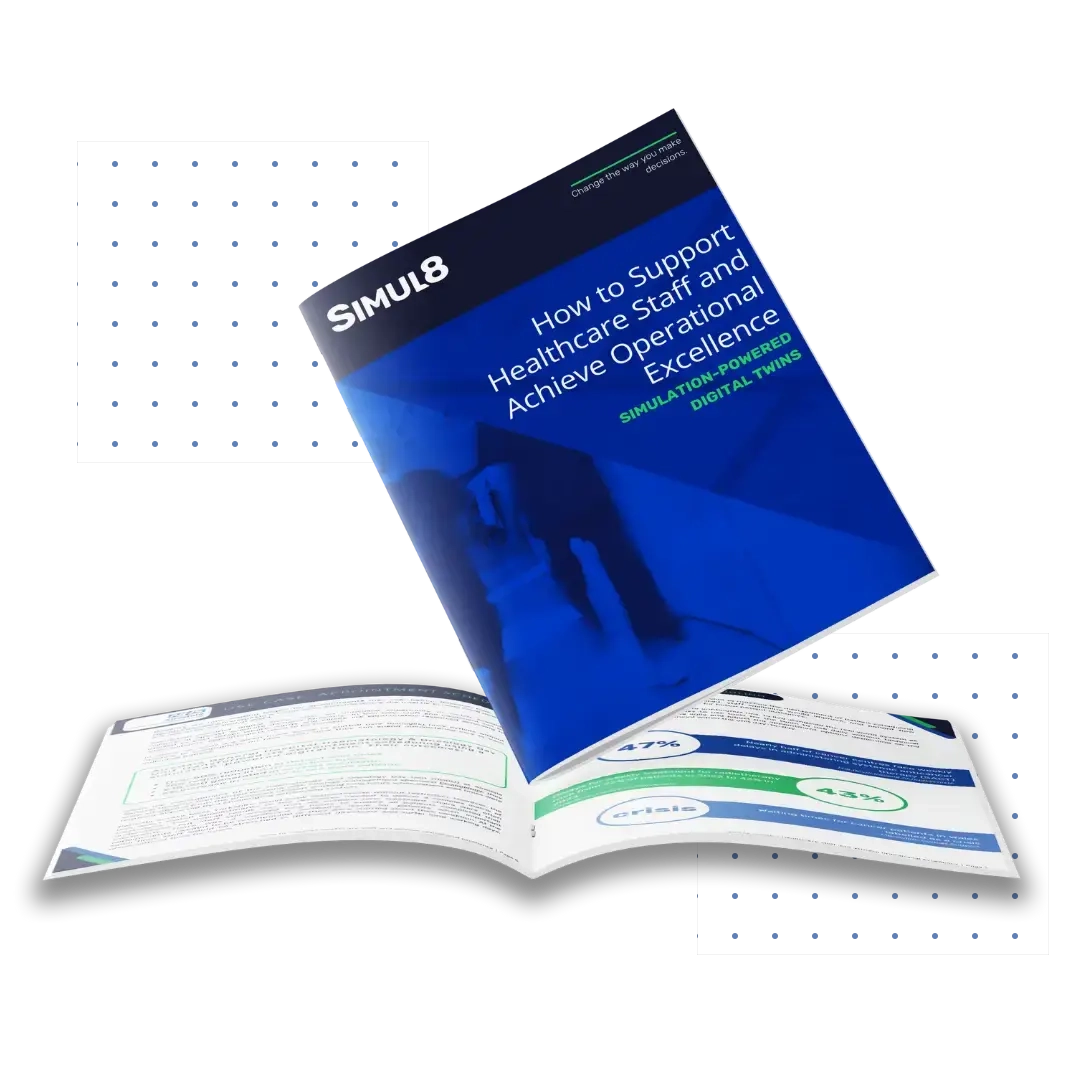Improve patient flow and enhance service quality
Test emergency department layout, process and resource changes in a risk-free environment with Simul8.
How can simulation improve emergency department efficiency?
According to a national survey by the Institute of Medicine, 91% of US emergency departments (EDs) reported crowding as a problem, with 40% indicating that it was a daily occurrence.
This is a key issue for healthcare organizations as it can compromise care quality, patient safety and satisfaction and lead to delays and increased costs.
Although there are many uncontrollable external factors which contribute to crowding, there are several factors that can be addressed to improve the use of resources and patient flow.
Altering department layouts, increasing in-patient beds, refining operational processes and more effectively managing staffing levels are examples of ways to reduce congestion and increase patient satisfaction rates.
But how can emergency departments safely test the impact of changes without compromising services and costs?
With Simul8, you can model emergency department flow systems, uncovering opportunities to improve operational efficiency in a low-risk environment.
Why use Simul8 for improving emergency department flow?
Simul8 enables hospitals to easily test, measure and implement process changes and identify the effect of changes across complex systems.

Predict and manage demand surges and constraints.
Utilize existing data sources and predictive analysis to accurately identify or forecast capacity constraints and surges in demand.
As simulation mirrors real processes in a visual way, you’ll easily see where queues and waiting times are happening – days, months or even years into the future.

Test process changes in a safe, digital environment.
Conduct powerful ‘what-if’ analysis to understand the impact of any changes in processes, resources, patient volumes and capacity on emergency department performance.
Simulation allows you to thoroughly test changes, without risk to patients and existing processes.

Make cost-effective, evidence-based decisions.
Compare improvement scenarios across waiting times, throughput, costs, and other important measures.
This allows decisions to go beyond opinions and expert recommendations, and instead be based on evidence and quantifiable results for your hospital’s own circumstances.


"With ongoing cost reductions and other restrictions within the healthcare environment, our resources are getting to be very precious and scarce, so we need to use tools like Simul8 to make sure we are getting the highest performance we can get out of the most reasonable amount of resources."
Chief Administrative Officer, Johns Hopkins
Johns Hopkins Health System optimizes emergency department patient flow with Simul8.
Read the case studyFeatured whitepaper
Airedale General Hospital reduced patient waiting times by over 50% using a digital twin simulation.
Find out how
